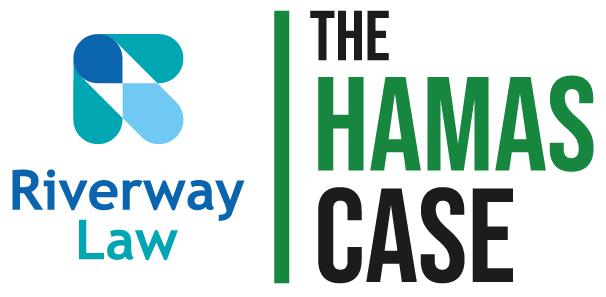Appendix 05
This is what we struggle for
(Memo prepared by Hamas Political Bureau in the late 1990s upon the request of Western diplomats in the Jordanian capital Amman)
The Islamic Resistance Movement (Hamas) is a Palestinian national liberation movement that struggles for the liberation of the Palestinian occupied territories and for the recognition of Palestinian legitimate rights. Although it came into existence soon after the eruption of the first Palestinian intifadah (uprising) in December 1987 as an expression of the Palestinian people’s anger against the continuation of Israeli occupation of Palestinian land and persecution of the Palestinian people, Hamas’ roots extend much deeper in history.
The movement’s motivation for struggle has been expressed by its founder and leader Sheikh Ahmad Yassin: “the movement struggles against Israel because it is the aggressing, usurping and oppressing state that hoists the rifle in the face of our sons and daughters day and night.”
Hamas considers itself an extension of an old tradition that goes back to the early twentieth century struggle against British and Zionist colonialism in Palestine. The fundamentals from which Hamas derives its legitimacy are mirrored in the very name it chose for itself. Its Islamism means that it derives its guiding principles from the doctrines and values of Islam. In other words, Islam is Hamas' ideological frame of reference. It is from the values of Islam that the movement seeks inspiration in its mobilisation effort and in compensating for the huge difference in material resources between the Palestinian people and their supporters on the one hand and Israel and its supporters on the other.
The prospect of the movement initiating, or accepting, dialogue with Israel is non-existent at present because of the skewed balance of power between the Palestinians and the Israelis. In Sheikh Yassin's own words: “There can be no dialogue between a party that is strong and oppressive and another that is weak and oppressed. There can be no dialogue except after the end of oppression.”
The forms of resistance adopted by Hamas stem from the same justifications upon which the national Palestinian resistance movement based its struggle for more than a quarter of a century. At least the first ten articles of the Palestinian National Charter are completely compatible with Hamas' discourse as elaborated in its own Charter and in other declarations. Furthermore, the same justifications for resistance had, prior to the emergence of Hamas in December 1987, been recognised, or endorsed, by a variety of regional and international bodies such as the Arab League, the Islamic Conference Organisation, the Non-Aligned Movement and the United Nations. The recognition that the Israeli occupation of the West Bank and Gaza in 1967 is illegal can be clearly read in UN Security Council Resolutions 242 and 338.
In spite of the initiation of peace negotiations and eventually the signing of the Oslo accords between the PLO and Israel, Hamas continued its struggle having recognized the failure of the peace process to bring about an end to occupation. Hamas believes that the majority of the Palestinian people has come to the same conclusion and is therefore discontent with the path taken by the PLO to create peace with Israel.
Oslo defenders claimed for months following its signing that it would bring an end to occupation and that, therefore, the Palestinians needed no longer exercise armed struggle against the Israelis. But eight years after Oslo, the following are the dividends of peace:
The territories occupied in 1967 are still occupied.
Like never before, the West Bank and Gaza have been carved, mutilated and turned into isolated islets of human concentrations, or cantons, administered on behalf of the Israelis by the PA.
Existing Jewish settlements continued to expand and new ones have been erected.
Jerusalem is being expanded and de-Arabised.
Large areas of land have been confiscated to allow for the construction of by-passes for the exclusive use of Jewish motorists and especially settlers who illegally live on confiscated Arab land.
Thousands of Palestinians continue to be detained in Israeli prisons.
Various forms of collective punishment continue to be adopted including the demolition of homes, the closure of entire areas and the enforcement of economic blockades, the destruction of Palestinian infrastructure and the uprooting of trees and crops.
The economic situation is much worse than ever before.
In other words, the peace process has not improved the conditions of Palestinians under occupation and does not seem to promise any better future. The claim that armed struggle was no longer necessary (it should be noted here that no one within the Palestinian camp claimed it was illegal) has therefore been refuted by reality, giving credence to the argument of Hamas (which is no different from the argument adopted before Oslo by the nationalist movement as a whole and that continues to be adopted by a score of Palestinian factions opposed to Oslo) that armed struggle is the only real means of liberation.
In spite of the overwhelming militant image it has in the minds of many people in the West, Hamas is not a mere military faction. It is a political, cultural and social grass root organisation that has a separate military wing specialised in armed struggle against Israeli occupation. Apart from this clandestine military wing, all other sections within Hamas function through overt public platforms. The military wing has its own leadership and recruiting mechanism.
Hamas social and educational activities in the Occupied Territories have become so entrenched within the Palestinian community that neither the Israelis nor their peace partners in the Palestinian Authority have been able to extricate. The fact of the matter is that Hamas, contrary to Israeli assessment, acts as an infrastructure to the numerous cultural, educational and social institutions in Gaza and the West Bank that render invaluable and irreplaceable services to the public. In other words, it is Hamas that gives life to these institutions and not the reverse. The Israelis have repeatedly told the PA to close them down. The PA has tried but failed. A crackdown on these institutions amounts to a declaration of war not against Hamas but against the Palestinian community as a whole.
Contrary to the experience of most other Palestinian factions during the seventies, Hamas armed struggle emanates from Palestine and is restricted to its territory, to what Hamas considers to be the legitimate battlefield. By limiting its armed struggle to resisting occupation, the movement has successfully averted Israeli attempts to drag it to a battle outside Palestine. The assassination attempt on the life of Khalid Mish'al, Hamas political head, was clearly intended to embroil the movement in a war of attrition outside Palestine; a battle Hamas has continuously tried to avoid. Adhering to this position on the part of Hamas has made it rather difficult for the Israelis and their allies, especially in the USA, to convince the world's public opinion that Hamas is a terrorist group. By all standards, Hamas is a national liberation movement whose military effort is directed solely and exclusively at the foreign occupiers.
Hamas' military wing, the Brigades of Martyr ‘Izziddin Al-Qassam, have planned and carried out a number of martyrdom operations that are usually described in the Western media as suicide operations. These operations are in principle directed against military targets. Targeting civilians is considered an aberration from Hamas’ fundamental position of hitting only military targets; they represent an exception necessitated by the Israeli insistence on targeting Palestinian civilians and by Israel’s refusal to agree to an understanding prohibiting the killing of civilians on both sides; an understanding comparable to the one reached between Israel and Hezbollah in southern Lebanon. It is worth recalling that the first martyrdom operation came in response to the massacre of Muslim worshippers as they kneeled in prayer in Al-Masjid al-Ibrahimi at dawn on the fifteenth day of the fasting holy month of Ramadan (25 February 1994).
Sheikh Yassin, who repeatedly offered the Israelis a truce that has always been rejected by the Israelis, explains that Hamas does not endorse the killing of civilians, but that it is sometimes the only option it has if it is to respond to the murdering of Palestinian civilians and the cold-blooded assassination of Palestinian activists.
Notwithstanding its disagreement with the PLO and the Palestinian Authority (PA), Hamas considers all Palestinians to be victims of Israeli occupation and therefore would not be drawn into inter-Palestinian factional strife. Hamas firmly believes that many of those who at one stage had some hope in Oslo, including a large segment of Yassir Arafat’s own Fatah faction, have been disillusioned, have realized the futility of the exercise, and have realized that they have no option but to resume the struggle until the occupation is brought to an end.
Hamas considers all peoples of the world potential friends and supporters of the Palestinian people in their legitimate struggle for freedom, one that will alone guarantee the accomplishment of peace. Hamas believes that permanent peace is possible only if founded on justice and equal human dignity.
Hamas is aware of the fact that the balance of power in the world today is not in its favor, but does also realize that this has always been the case whenever an oppressed people started their long-term struggle for freedom from foreign occupation and tyranny. It is therefore our firm belief that eventually the Israelis will come to terms with reality and realize that they have no option but to deliver the Palestinian people from the servitude imposed on them by an occupation that violates all known international conventions and declarations including the various UN Security Council resolutions on this issue.
Hamas would be willing to consider a cease-fire agreement with the Israelis upon their agreement to end their occupation of all the territories occupied in the aftermath of the six-day war in 1967. This would entail the cessation of all hostilities on the part of Hamas in exchange, on the part of Israel, for:
the withdrawal of Israeli occupation troops from the West Bank and Gaza Strip;
the evacuation of all Jewish settlements illegally erected and populated by Jewish immigrants on Palestinian lands seized by force in both the West Bank and Gaza; and
recognizing the right of the Palestinian people to self-determination.
Hamas does recognize the importance of the international community in bringing about such a settlement and therefore extends its hand, in good faith and appreciation, to all such governments and communities that may be willing to take part in this process for the benefit of humanity and in accomplishment of a peace based on justice.
However, Hamas would enter into negotiations about the details of the settlement only once the Israelis have agreed to the aforementioned terms that are aimed at bringing about a full withdrawal from all the territories occupied in 1967.

